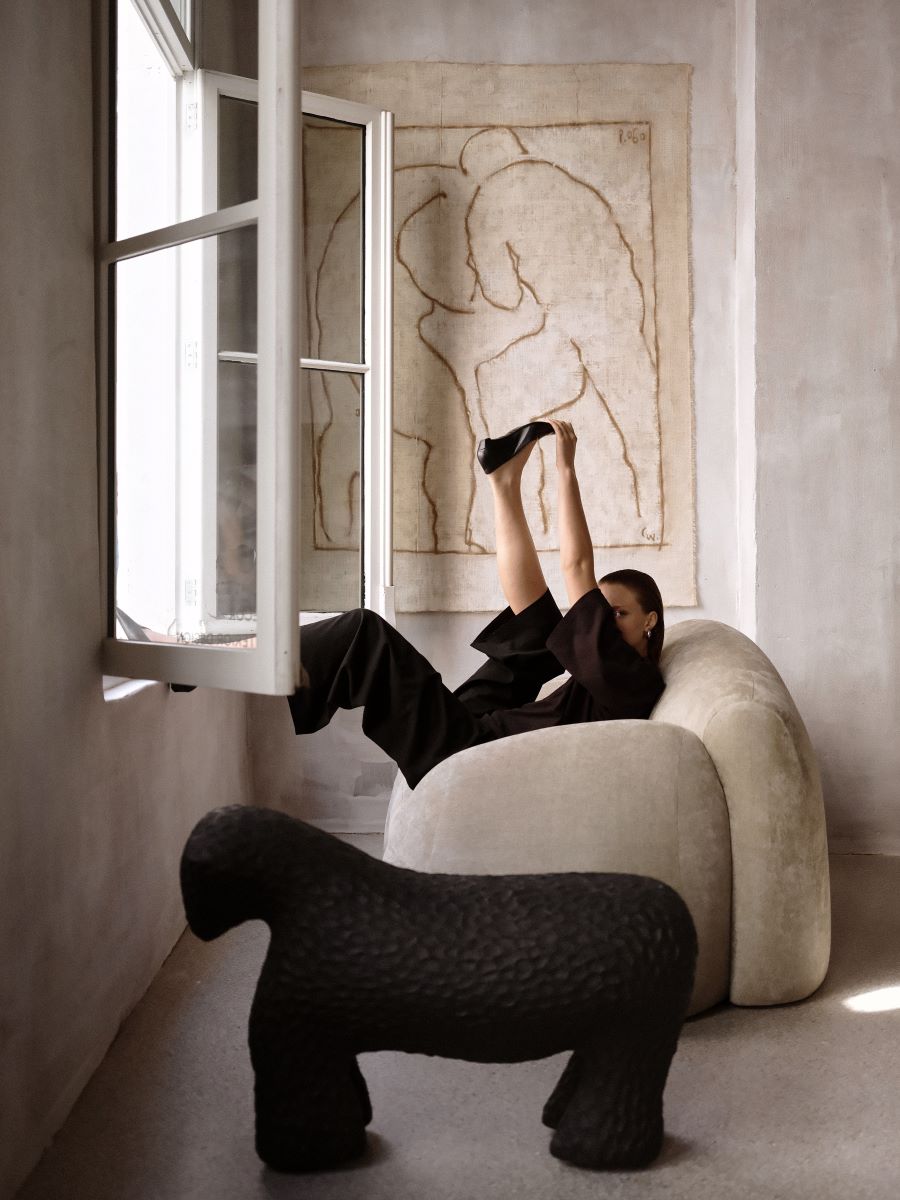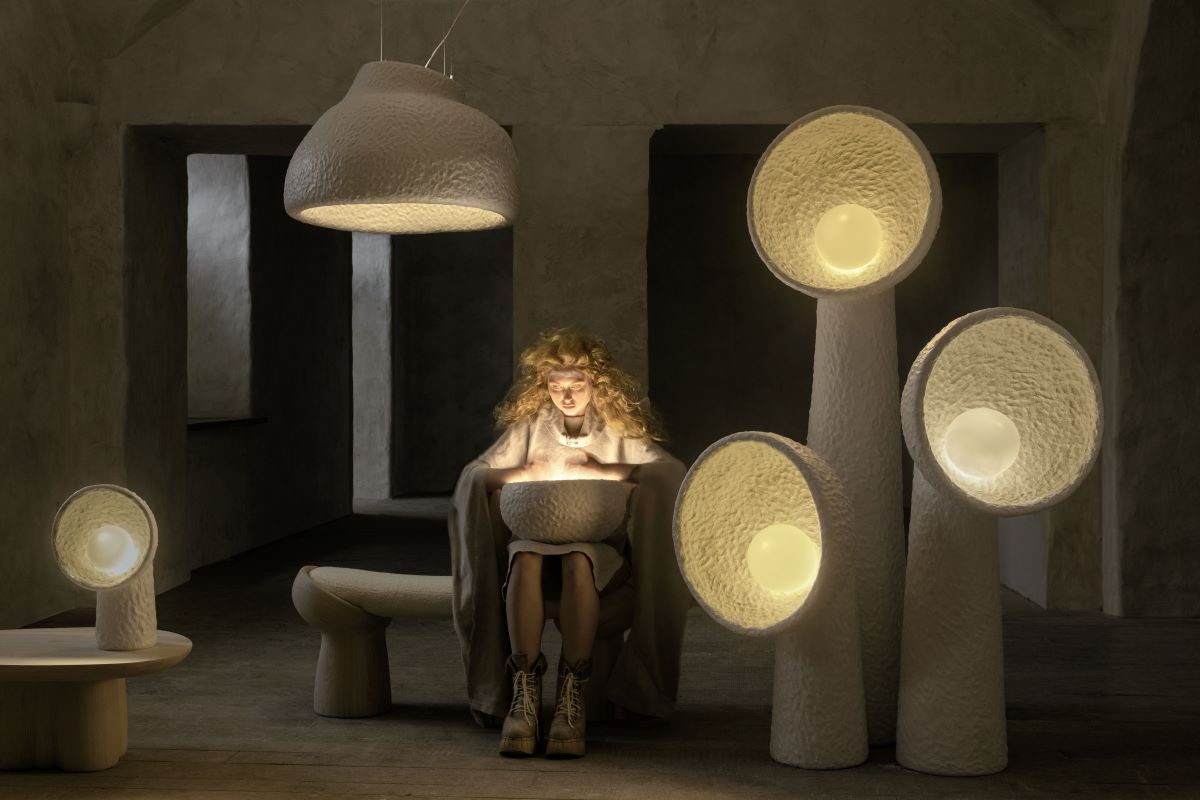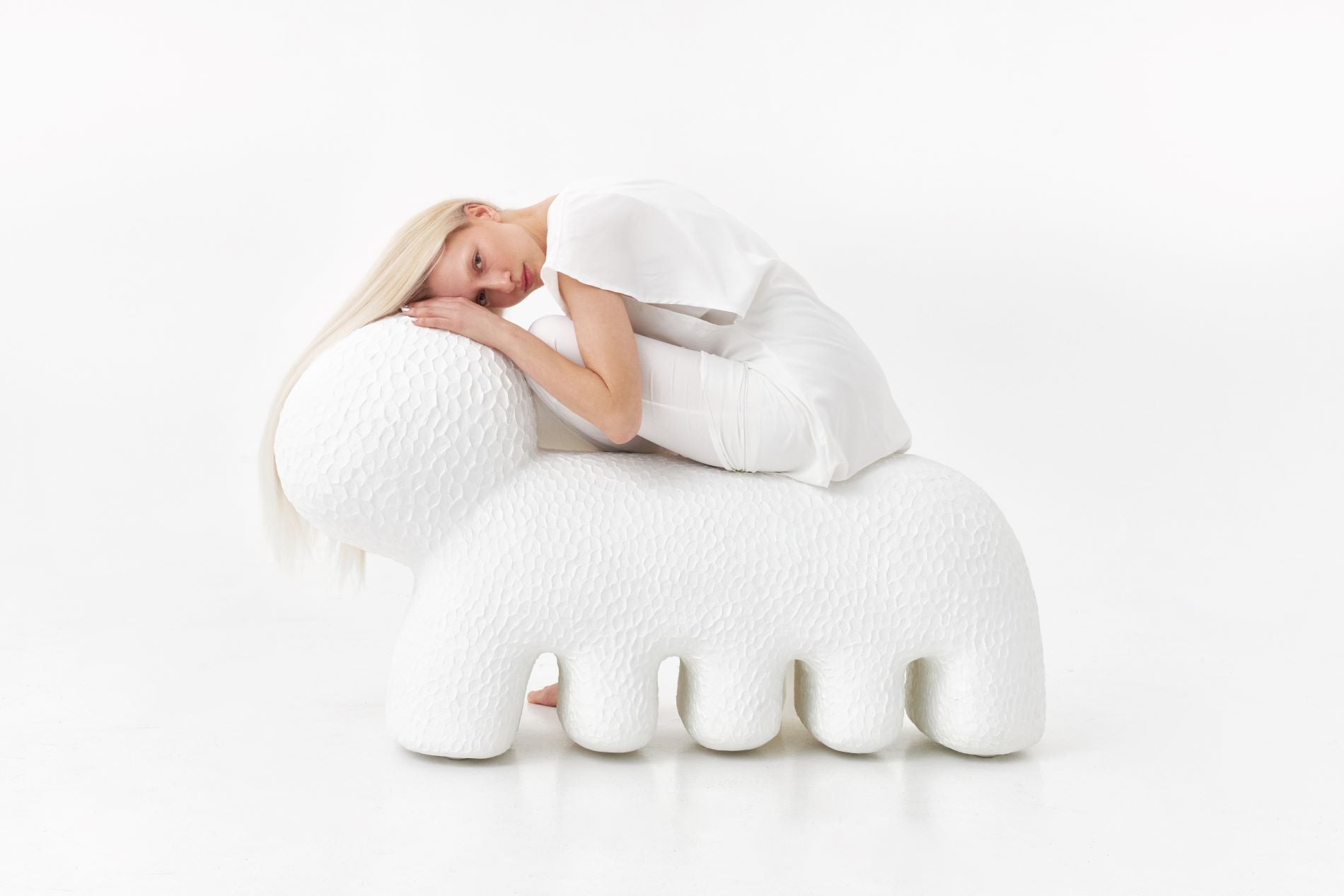Interior design project by Victoria Yakusha studio

Creating Sustainable Interior Design
Interior design project by Victoria Yakusha studio
Sustainable interior design has become a fundamental aspect of modern living, driven by growing environmental awareness and a desire for a more conscious way of life. As more people seek to reduce their environmental footprint, sustainable interior design offers a way to create spaces that are not only aesthetically pleasing but also ecologically responsible. This design approach embraces eco-friendly materials, energy-efficient technologies, and mindful consumption, contributing to the preservation of the environment while enhancing the quality of life. In this blog post, we'll explore how to create ecologically conscious spaces that are aligned with sustainable design principles, focusing on key aspects such as materials, energy efficiency, and minimalist design philosophies.
Sustainability in interior design extends beyond just the use of eco-friendly materials. It’s a holistic approach to designing spaces that respect the environment and create a healthier, more balanced living experience. The importance of sustainable design has grown as the world becomes more aware of the need to address the impacts of climate change, waste, and resource depletion. Sustainable interior design allows us to live in harmony with nature, creating spaces that are not only beautiful and functional but also support a sustainable, long-term future for the planet.
ZTISTA chairs, SONIAH lamp by Victoria Yakusha

ZTISTA chairs, SONIAH lamp by Victoria Yakusha
The Foundation of Sustainable Interior Design: Eco-Friendly Materials
At the heart of sustainable interior design lies the careful selection of materials that minimize environmental impact. Eco-friendly materials are renewable, biodegradable, and non-toxic, making them the ideal choice for those who want to reduce their carbon footprint while creating beautiful, functional spaces. Sustainable home decor begins with choosing natural materials that are responsibly sourced, such as wood, stone, bamboo, and cork. These materials not only have a low environmental impact but also bring a sense of warmth and organic beauty to interiors.
In addition to these natural materials, the use of recycled and upcycled products has become increasingly popular in sustainable design. Reclaimed wood, recycled glass, and repurposed textiles reduce waste and avoid the need for new resources, making them a crucial part of an eco-conscious design strategy. For instance, salvaging old furniture and reworking it into new, functional pieces not only adds character to a space but also cuts down on the demand for new products, which require additional energy to manufacture and transport.
Another important element of sustainable materials is the emphasis on non-toxic finishes and paints. Many conventional paints and finishes contain harmful chemicals that can negatively affect both the environment and human health. By opting for non-toxic, VOC-free (volatile organic compound) paints and finishes, designers and homeowners can ensure a healthier indoor air quality while supporting more environmentally friendly manufacturing practices. Additionally, sustainable flooring options like bamboo, cork, and reclaimed wood provide durable, stylish alternatives to traditional hardwood flooring, which often involves unsustainable harvesting practices.
ZTISTA chair. Process of creation

ZTISTA chair. Process of creation
Sustainable Interior Design and Energy Efficiency
Energy efficiency plays a significant role in sustainable interior design. An energy-efficient space minimizes its energy consumption while maintaining comfort, which reduces both environmental impact and long-term utility costs. One of the key elements in achieving energy efficiency is optimizing insulation. Proper insulation ensures that the space remains temperature-controlled, reducing the need for excessive heating or cooling. Insulated windows, for instance, can help maintain a comfortable indoor climate without relying on constant air conditioning or heating, which can significantly cut energy consumption.
Sustainable interior design also incorporates renewable energy sources, such as solar panels and wind energy, to further minimize a space’s reliance on traditional energy grids. In residential settings, these renewable technologies can help power lighting, appliances, and heating systems, leading to reduced carbon emissions. These green technologies are becoming more accessible and affordable, making it easier for homeowners and businesses to transition to cleaner energy sources.
Furthermore, designing spaces with natural light in mind not only enhances the aesthetic appeal of a home but also reduces the need for artificial lighting during the day. This simple yet effective approach to energy conservation helps minimize electricity consumption and supports a more sustainable way of living. Strategic placement of windows, skylights, and light-reflecting surfaces can brighten up spaces without relying on electricity, making your home or office more energy-efficient. Combining these energy-saving strategies with smart home systems that control lighting, temperature, and even appliances further reduces unnecessary consumption.
MOVCHUN armchair by Victoria Yakusha

MOVCHUN armchair by Victoria Yakusha
Victoria Yakusha’s “Live Minimalism” Philosophy: Sustainability Meets Design
Victoria Yakusha is a designer whose approach to interior design seamlessly integrates sustainability with minimalist aesthetics. As an award-winning architect and designer, Yakusha has long been known for her forward-thinking philosophy of "live minimalism," which focuses on creating spaces that are not only visually serene and uncluttered but also eco-conscious and sustainable. For Yakusha, sustainability goes beyond the mere choice of materials—it extends to every aspect of the design process, from the conceptualization of a space to its long-term function.
Yakusha’s design ethos emphasizes a deep respect for nature and a commitment to reducing waste. By focusing on functionality and simplicity, her work allows spaces to breathe and grow, free from excess. This minimalist approach encourages homeowners to prioritize quality over quantity, resulting in interiors that feature durable, timeless pieces rather than fast-fashion furniture or disposable decor. The result is an interior that remains relevant and functional for many years, with less need for frequent updates or replacements.
Central to her designs is the use of ZTISTA, a signature material blend that she developed to combine sustainability with aesthetic appeal. ZTISTA is a composite material made from natural elements like stone and wood, designed to offer the benefits of sustainability without compromising on beauty or performance. This material encapsulates Yakusha’s vision of sustainable craftsmanship—creating functional, eco-friendly designs that stand the test of time. ZTISTA is both durable and adaptable, allowing it to be used in a variety of design applications, from furniture to architectural finishes.
Yakusha’s “live minimalism” philosophy also encourages the creation of spaces that prioritize function over excess. In her designs, each element has a purpose, contributing to a harmonious, balanced space. Minimalism, in this context, isn't about stark emptiness but about curating a space that feels uncluttered and intentional. This mindset leads to the use of eco-friendly furniture and decor that not only look beautiful but also offer long-term durability. By choosing pieces that are built to last, and prioritizing quality over quantity, Yakusha promotes sustainable design that reduces the need for frequent replacements. In addition, the "live minimalism" philosophy advocates for personalizing spaces with meaningful, long-lasting items—such as family heirlooms, cherished artifacts, or sustainably crafted furniture—thereby infusing life and warmth into a minimalist setting without compromising on eco-consciousness.
Public place project by Victoria Yakusha studio

Public place project by Victoria Yakusha studio
Creating Minimalist, Eco-Conscious Spaces: The Role of Thoughtful Design
Creating minimalist, eco-conscious spaces involves more than just choosing sustainable materials and energy-efficient technologies—it’s about crafting a living environment that reflects a sustainable way of life. The "live minimalism" philosophy emphasizes the idea that less is more, encouraging people to reduce clutter, embrace simplicity, and focus on items that serve a purpose. This approach not only creates cleaner, more organized spaces but also reduces the consumption of unnecessary resources.
Incorporating personal items that hold sentimental value, such as family heirlooms or meaningful art, is an integral part of the minimalist approach. This personalization helps infuse a space with warmth and character while maintaining a sense of simplicity. Additionally, the longevity of furniture and decor plays a central role in the sustainability of the space. Instead of opting for trendy or mass-produced items, minimalist design encourages selecting high-quality, durable furniture pieces that will last for years, reducing the need for frequent replacements. Sustainable design choices extend beyond furniture to include eco-friendly textiles, such as organic cotton, linen, and wool, which contribute to a healthier environment while offering comfort and style.
The idea of repurposing and upcycling also plays an important role in creating a sustainable minimalist space. Repurposing old furniture and giving it a new life not only saves money but also contributes to reducing waste and preventing landfill overflow. In addition to furniture, upcycled décor such as repainted antiques, reclaimed wood, and recycled textiles can create one-of-a-kind pieces that tell a story and add depth to the space. This sustainable approach to design helps minimize consumption while promoting creativity and individuality.
Victoria Yakusha’s design philosophy is a perfect example of how to create minimalist, ecologically conscious spaces. By incorporating sustainable materials like ZTISTA and focusing on timeless, functional design, she encourages individuals to live mindfully and respect the environment while embracing the simplicity and beauty of minimalism. Whether it’s through the careful selection of eco-friendly materials, energy-efficient design elements, or a commitment to durability and longevity, Yakusha’s work serves as an inspiring example of how sustainable interior design can transform spaces into harmonious, eco-conscious retreats.
ZTISTA chair by Victoria Yakusha

ZTISTA chair by Victoria Yakusha
Sustainable Interior Design for a Better Future
Sustainable interior design is more than just a trend—it is a critical approach to creating spaces that prioritize both aesthetics and environmental responsibility. By choosing eco-friendly materials, focusing on energy efficiency, and embracing minimalist philosophies, it’s possible to design spaces that contribute to a more sustainable future. Designers like Victoria Yakusha are leading the way by blending sustainability with timeless design principles, proving that beauty and eco-consciousness can coexist harmoniously. Whether it’s through the use of sustainable materials like ZTISTA or creating functional, long-lasting spaces that prioritize mindful living, sustainable interior design offers an opportunity to live in harmony with nature while still enjoying modern comfort and style.
As the demand for environmentally responsible living grows, sustainable interior design will continue to play a critical role in shaping the spaces where we live, work, and interact. With careful thought and attention to material choices, energy consumption, and overall design philosophy, we can create interiors that not only reflect our values but also contribute to the preservation of the planet. Embracing sustainable interior design principles today will ensure a healthier, more balanced environment for future generations.
You may also like

Animism in Design: Creating Meaningful Emotiona...
LEARN MORE
What Is “Living Minimalism” in Contemporary Des...
LEARN MORE
Miami’s Creative Scene: Exploring the Best in P...
LEARN MORE
Luxury Interior Design Trends 2025: Tips to Rev...
LEARN MORE
Interior Design Trends 2025: What’s Coming In a...
LEARN MORE
Women Designers: Revolutionizing Creativity and...
LEARN MORE
Animism in Design: Creating Meaningful Connecti...
LEARN MORE
Sustainable Simplicity: Embracing Live Minimali...
LEARN MORE
What Is “Living Minimalism” in Contemporary Des...
LEARN MORE
Interior Design Trends 2025: What’s Coming In a...
LEARN MORE
Animism in Design: Creating Meaningful Emotiona...
LEARN MORE
What Is “Living Minimalism” in Contemporary Des...
LEARN MORE
10 Years of FAINA: A Decade of Cultural and Sus...
LEARN MORE
Functional Art Furniture: Top 5 Unique Designs ...
LEARN MORE
Miami’s Creative Scene: Exploring the Best in P...
LEARN MORE
Luxury Interior Design Trends 2025: Tips to Rev...
LEARN MORE
Interior Design Trends 2025: What’s Coming In a...
LEARN MORE
Women Designers: Revolutionizing Creativity and...
LEARN MORE
Animism in Design: Creating Meaningful Connecti...
LEARN MORE
Sustainable Simplicity: Embracing Live Minimali...
LEARN MORE